High Levels of Intrinsic Tetracycline Resistance in Mycobacterium abscessus Are Conferred by a Tetracycline-Modifying Monooxygenase
- PMID: 29632012
- PMCID: PMC5971581
- DOI: 10.1128/AAC.00119-18
High Levels of Intrinsic Tetracycline Resistance in Mycobacterium abscessus Are Conferred by a Tetracycline-Modifying Monooxygenase
Abstract
Tetracyclines have been one of the most successful classes of antibiotics. However, its extensive use has led to the emergence of widespread drug resistance, resulting in discontinuation of use against several bacterial infections. Prominent resistance mechanisms include drug efflux and the use of ribosome protection proteins. Infrequently, tetracyclines can be inactivated by the TetX class of enzymes, also referred to as tetracycline destructases. Low levels of tolerance to tetracycline in Mycobacterium smegmatis and Mycobacterium tuberculosis have been previously attributed to the WhiB7-dependent TetV/Tap efflux pump. However, Mycobacterium abscessus is ∼500-fold more resistant to tetracycline than M. smegmatis and M. tuberculosis In this report, we show that this high level of resistance to tetracycline and doxycycline in M. abscessus is conferred by a WhiB7-independent tetracycline-inactivating monooxygenase, MabTetX (MAB_1496c). The presence of sublethal doses of tetracycline and doxycycline results in a >200-fold induction of MabTetX, and an isogenic deletion strain is highly sensitive to both antibiotics. Further, purified MabTetX can rapidly monooxygenate both antibiotics. We also demonstrate that expression of MabTetX is repressed by MabTetRx, by binding to an inverted repeat sequence upstream of MabTetRx; the presence of either antibiotic relieves this repression. Moreover, anhydrotetracycline (ATc) can effectively inhibit MabTetX activity in vitro and decreases the MICs of both tetracycline and doxycycline in vivo Finally, we show that tigecycline, a glycylcycline tetracycline, not only is a poor substrate of MabTetX but also is incapable of inducing the expression of MabTetX. This is therefore the first demonstration of a tetracycline-inactivating enzyme in mycobacteria. It (i) elucidates the mechanism of tetracycline resistance in M. abscessus, (ii) demonstrates the use of an inhibitor that can potentially reclaim the use of tetracycline and doxycycline, and (iii) identifies two sequential bottlenecks-MabTetX and MabTetRx-for acquiring resistance to tigecycline, thereby reiterating its use against M. abscessus.
Keywords: M. abscessus; antibiotic resistance; drug inactivation; intrinsic resistance; tetracyclines.
Copyright © 2018 American Society for Microbiology.
Figures
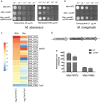

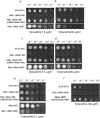
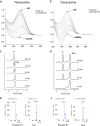
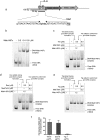
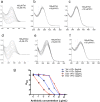
Similar articles
-
Mycobacterium abscessus WhiB7 Regulates a Species-Specific Repertoire of Genes To Confer Extreme Antibiotic Resistance.Antimicrob Agents Chemother. 2017 Oct 24;61(11):e01347-17. doi: 10.1128/AAC.01347-17. Print 2017 Nov. Antimicrob Agents Chemother. 2017. PMID: 28874378 Free PMC article.
-
In Vitro Activity of New Tetracycline Analogs Omadacycline and Eravacycline against Drug-Resistant Clinical Isolates of Mycobacterium abscessus.Antimicrob Agents Chemother. 2019 May 24;63(6):e00470-19. doi: 10.1128/AAC.00470-19. Print 2019 Jun. Antimicrob Agents Chemother. 2019. PMID: 30962331 Free PMC article.
-
In Vitro Antimicrobial Activities of Tigecycline, Eravacycline, Omadacycline, and Sarecycline against Rapidly Growing Mycobacteria.Microbiol Spectr. 2023 Feb 14;11(1):e0323822. doi: 10.1128/spectrum.03238-22. Epub 2022 Dec 8. Microbiol Spectr. 2023. PMID: 36475850 Free PMC article.
-
Genetic Determinants of Tigecycline Resistance in Mycobacteroides abscessus.Antibiotics (Basel). 2022 Apr 25;11(5):572. doi: 10.3390/antibiotics11050572. Antibiotics (Basel). 2022. PMID: 35625216 Free PMC article. Review.
-
Non-tuberculous mycobacteria and the rise of Mycobacterium abscessus.Nat Rev Microbiol. 2020 Jul;18(7):392-407. doi: 10.1038/s41579-020-0331-1. Epub 2020 Feb 21. Nat Rev Microbiol. 2020. PMID: 32086501 Review.
Cited by
-
Antimicrobial Resistance Profiles in Enterococcus spp. Isolates From Fecal Samples of Wild and Captive Black Capuchin Monkeys (Sapajus nigritus) in South Brazil.Front Microbiol. 2018 Oct 9;9:2366. doi: 10.3389/fmicb.2018.02366. eCollection 2018. Front Microbiol. 2018. PMID: 30356681 Free PMC article.
-
Mycobacterium abscessus, an Emerging and Worrisome Pathogen among Cystic Fibrosis Patients.Int J Mol Sci. 2019 Nov 22;20(23):5868. doi: 10.3390/ijms20235868. Int J Mol Sci. 2019. PMID: 31766758 Free PMC article. Review.
-
Insights on the Pathogenesis of Mycobacterium abscessus Infection in Patients with Cystic Fibrosis.J Clin Med. 2025 May 16;14(10):3492. doi: 10.3390/jcm14103492. J Clin Med. 2025. PMID: 40429486 Free PMC article. Review.
-
Monooxygenases and Antibiotic Resistance: A Focus on Carbapenems.Biology (Basel). 2023 Oct 9;12(10):1316. doi: 10.3390/biology12101316. Biology (Basel). 2023. PMID: 37887026 Free PMC article. Review.
-
Efflux pumps and membrane permeability contribute to intrinsic antibiotic resistance in Mycobacterium abscessus.bioRxiv [Preprint]. 2024 Aug 24:2024.08.23.609441. doi: 10.1101/2024.08.23.609441. bioRxiv. 2024. Update in: PLoS Pathog. 2025 Apr 10;21(4):e1013027. doi: 10.1371/journal.ppat.1013027. PMID: 39229117 Free PMC article. Updated. Preprint.
References
-
- Griffith DE, Aksamit T, Brown-Elliott BA, Catanzaro A, Daley C, Gordin F, Holland SM, Horsburgh R, Huitt G, Iademarco MF, Iseman M, Olivier K, Ruoss S, von Reyn CF, Wallace RJ Jr, Winthrop K, ATS Mycobacterial Diseases Subcommittee. 2007. An official ATS/IDSA statement: diagnosis, treatment, and prevention of nontuberculous mycobacterial diseases. Am J Respir Crit Care Med 175:367–416. doi:10.1164/rccm.200604-571ST. - DOI - PubMed
Publication types
MeSH terms
Substances
Grants and funding
LinkOut - more resources
Full Text Sources
Other Literature Sources
Medical
Molecular Biology Databases
Research Materials
Miscellaneous

